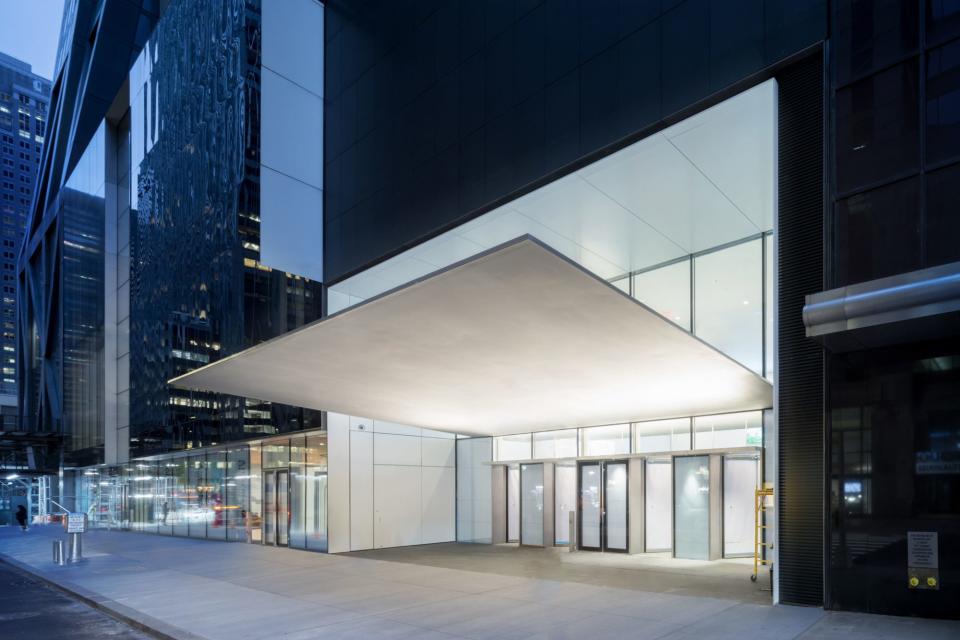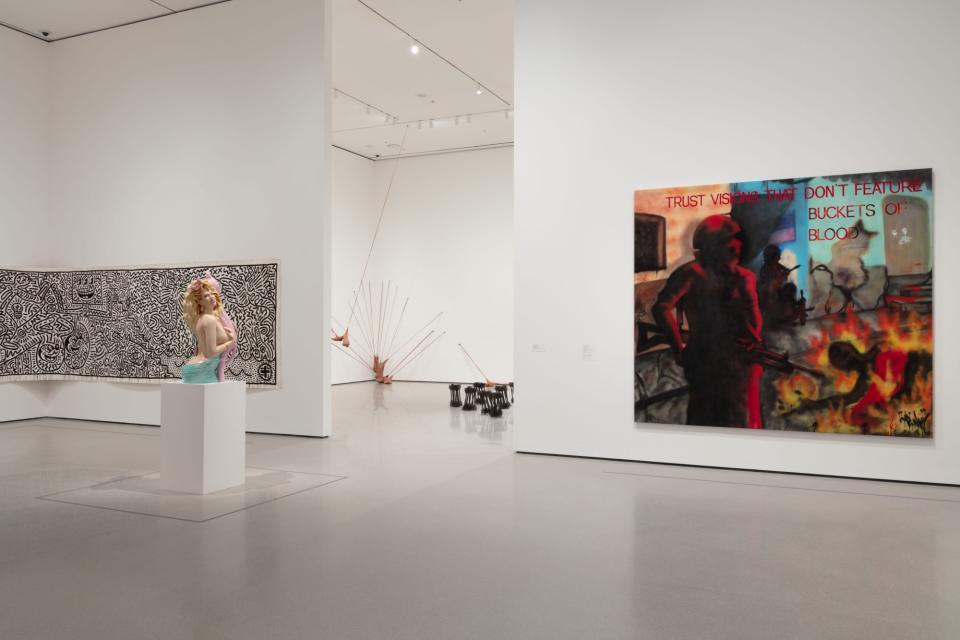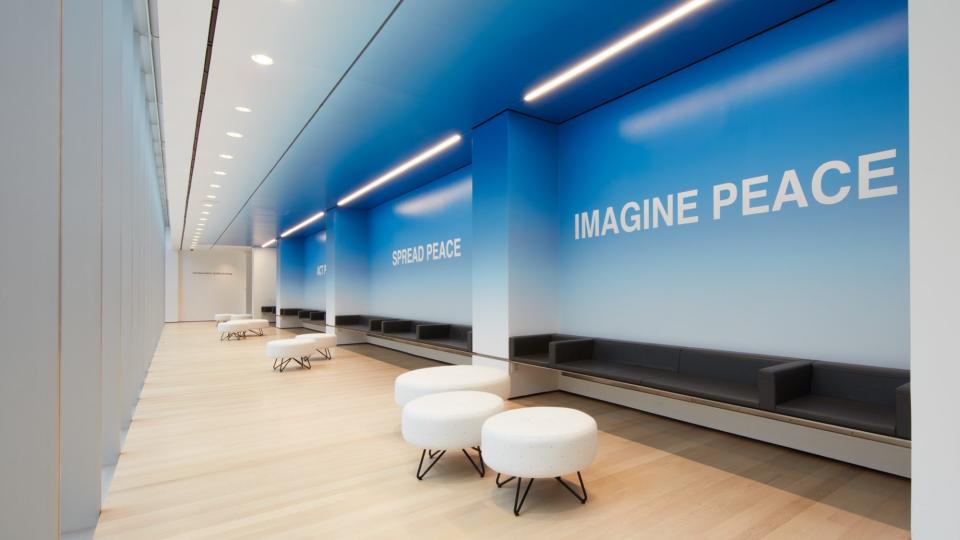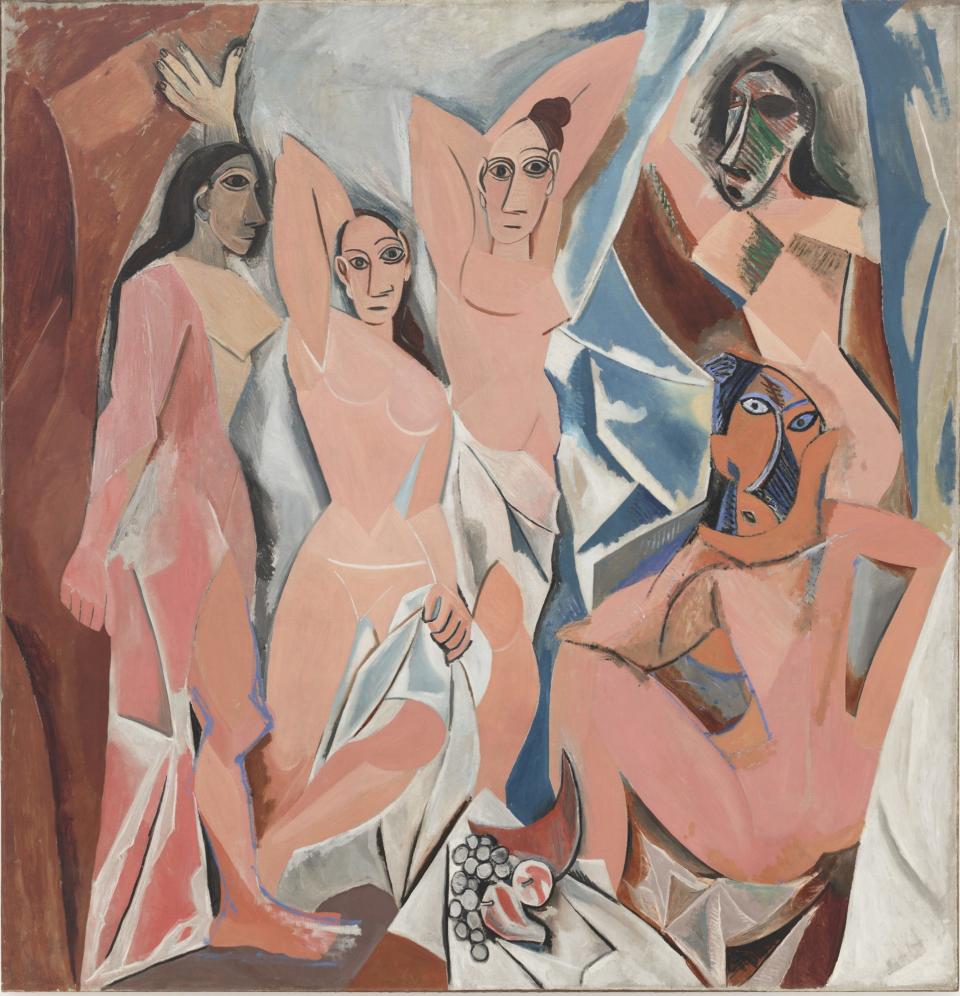Unwrapping the New MoMA’s Great Pros and Cons
The new Museum of Modern Art is magnificent. But.
That is the strongest takeaway from early views of the sprawling rehang of the legendary New York institution, which opens to the public October 21 and to members a week earlier. After a sweeping redesign and westward-to-nearly-Sixth-Avenue expansion by Diller Scofidio + Renfro in collaboration with Gensler, it reopens after four months closed and to much fanfare.
The Modern’s changes are profound. The building is now juiced up to 165,000 square feet of gallery space, with higher ceilings, more windows, and a floor for “monumental” art. More than 2,500 works are on view, hundreds more than previously. MoMA says more than a fourth of the artworks on view were added to the collection not just in the last century, but in the last five years alone.

In the name of diversity and inclusion, MoMA curators have abdicated the throne of telling the grand narrative of Modern art. The curators don’t just rewrite art history here—the book of art history—they’ve turned it into a website: subject to change, to customization even, with brighter images and more detours. No categories like “Abstraction.” No ancestry.com–type family tree tying Cézanne to Picasso. Precious little geographic breakdown and only broad buckets of chronology. And in this core alteration, it loses perhaps not so much cohesion, but an air of suspense and feeling of grace. This is a choose-your-adventure history of art, and one without clear turning points and climaxes. You wander galleries with titles like Machines, Mannequins and Monsters and At the Border of Art and Life, turning onto gorgeous thing flanked by gorgeous thing surrounded by other gorgeous thing (Matisse! Picasso! A chapel of Brancusi! Cool people you’ve never heard of!) and say, “tell me a story.”
There’s no denying a radical rethink was needed. This MoMA, for example, is the first to feature a gallery of female nudes by female artists. For decades, women artists and those of non-European origin were just not in the picture at MoMA. Invisible. Now, led by chief curator Ann Temkin, the museum reverses that with endorsements like the gloriously talented Florine Stettheimer, famed for her iconoclastic, lyrical paintings and her art-world salons of the 1930s and of Mexican surrealist Leonora Carrington, to name just two. And if you don’t know their work, there’s pleasures ahead.

At its best, the new MoMA highlights artists who had rightly inspired inside-art-world cults but weren’t widely known, like Havana-born Ana Mendieta, passionate pioneer of so-called earth-body art. And Jean-Michel Basquiat and Keith Haring, both left out of the last big rehang, in 2004, are restored. A spotlight is also thrown on some powerhouse artists working right now, like William Pope.L.
It’s not that newly showcased artists, from German sculptor Katharina Fritsch to “outsider” Bill Traylor, don’t deserve to be elevated, but what’s missing instead. Is there only one de Kooning, only one Gober? My Lord, did we miss the Ryman? Did Schnabel and Murakami not make the cut or are they just hard to find in the deluge? And do you have to go to the Whitney to see some Hoppers?

How soon before we get online offers from arts retailers and dealers to “Play the new MoMA” with sales of the “rediscovered” artists. The art trade that has largely endorsed the MoMA changes has a financial interest in the sale of contemporary art, much of it multiples at relatively lower price points by relatively younger artists. The creation of stars is exactly what the art industry needs. Moreover, within the museum’s promise to rehang every six months is a savvy plus: It means that any artist currently being admired by a generous benefactor can get a push without an actual institutional endorsement. Yes, this is a cynical analysis of the museum’s monumental achievement, but it doesn’t mean it’s wrong.
As for the building itself—it’s serviceable, given that it is something of a Lego sculpture of blocks made by different manufacturers. The first MoMA on 53rd Street was designed by Philip Goodwin and Edward Durell Stone; Philip Johnson and César Pelli chimed in later with welcome additions. The 2005 Yoshio Taniguchi escalator-powered iteration was largely seen as flawed (the 2019 version re-raises the lobby ceiling, thankfully). And for this year’s model, MoMA blew through the lovely Tod Williams Billie Tsien Architects–designed American Folk Art Museum next door and now intersects with the Jean Nouvel residential skyscraper. It’s a miracle it functions at all. (Hopefully, the next MoMA is built from scratch.)

Some marvelous touches: Some of the walls actually have colors like red, purple, brown, gray. These accents to the traditional modernist white box are rare but fresh and delightful. Not incidentally, in a real breakthrough, the new MoMA features perhaps the best museum integration ever of video art, yanking movies outside of curtained auditoriums and darkened galleries and screening the images alongside traditional art.
So at no point should you let any of this carping keep you from this magnificent institution. The classic masterpieces are there, and they are breathtaking. The Pollock. The Picassos. The Malevich. The Matisses. The Kahlo. The Johns. A near-chapel of Brancusi. We could go on and on. So will you.
Originally Appeared on Architectural Digest

